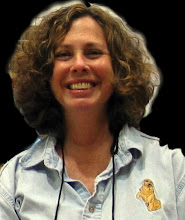Agatha Christie and Alzheimer clues
 The Ultimate Whodunit: Agatha Christie's mysteries may reveal Alzheimer's clues. "Agatha Christie’s whodunits have entertained the masses for close to a century. Now, in an unexpected plot twist, the British author’s life work itself is shedding light on one of medicine’s great mysteries—Alzheimer’s."
The Ultimate Whodunit: Agatha Christie's mysteries may reveal Alzheimer's clues. "Agatha Christie’s whodunits have entertained the masses for close to a century. Now, in an unexpected plot twist, the British author’s life work itself is shedding light on one of medicine’s great mysteries—Alzheimer’s."You'll want to read this article if you're interested in Christie and the result of aging and her novels. If you're a writer, you'll really want to read this, especially if you're concerned about generations to come analyzing your works not for their interest or merit, but for scientific studies into your psyche. The article is a real scientific computer study of linguistic patterns in older works of writers compared with their earlier works. Christie had 85 well plotted novels and plays written over 53 years, so she was a great subject for this research. Christie was never diagnosed with Alzheimer's, but the premise of the study/article is that Alzheimer's might have been responsible for her decline in her late 70s and what was said to be "muddled, meandering plots of her later novels." The author of the study cites Elephants Can Remember which was written when Christie was 81: it contained a 30 per cent drop in vocabulary compared to her writing at age 63, 18% more repeated phrases, and a nearly threefold increase in indefinite nouns.
Just a few questions come to my mind, how much time did she have to write ECR? What else was happening in her life? This was a series she worked on throughout her career with fewer novels about Oliver, rather than the huge numbers of Poirots and Marples. Aren't there other factors that we as readers, not scientists should taken into consideration. I know the study was about one specific thing --yes, I'm using the word thing--but Elephants Can Remember, an Ariadne Oliver novel, may not be the best choice.
I guess I really love Agatha Christie novels, and the study disturbed me.
A tip of the hat to Sue Trowbridge for this article.
Labels: Agatha Christie, Alzeiheimer's


